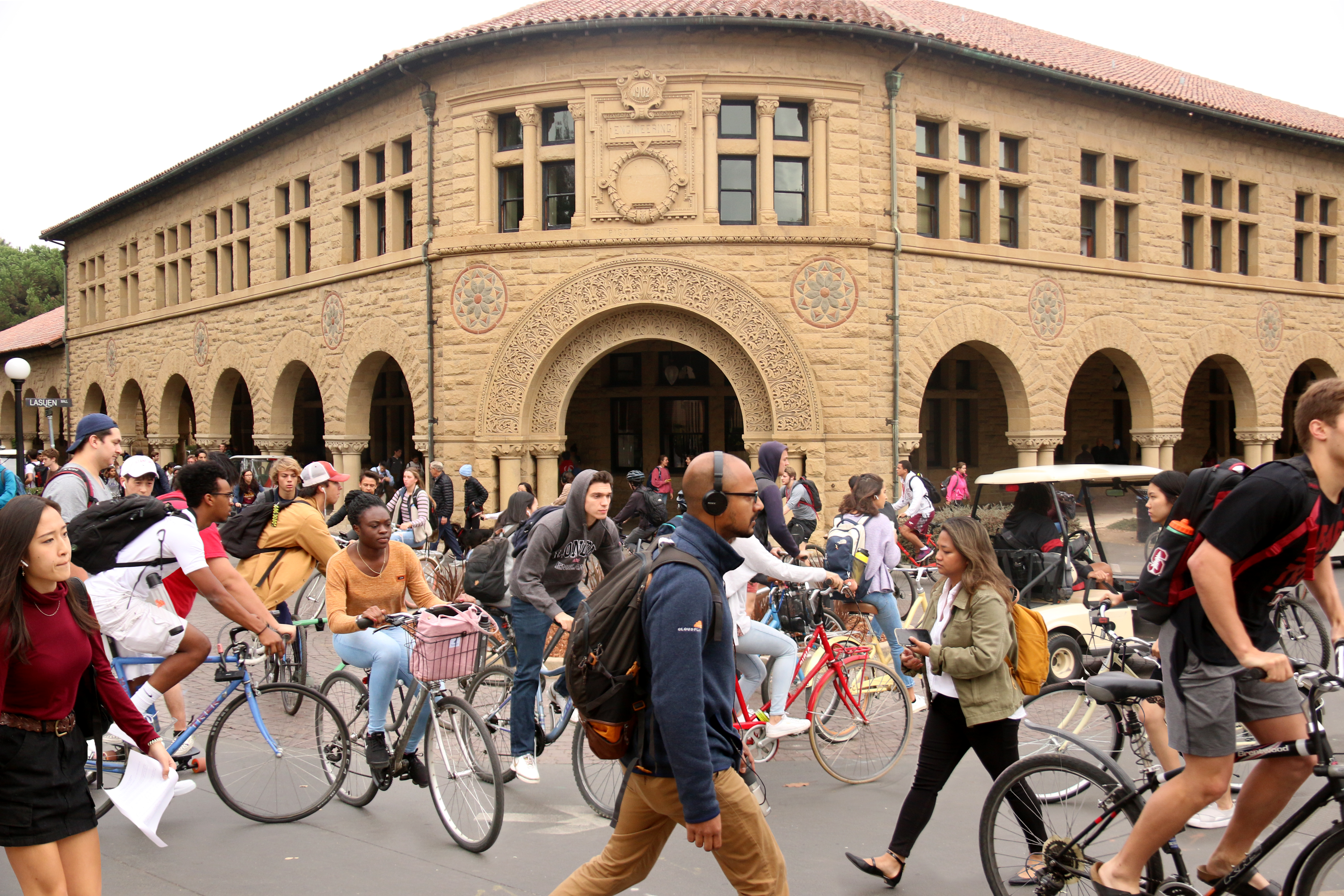With ominous nicknames like the “Circle of Death,” roundabouts have gained a bad reputation on Stanford’s campus. The rules for navigating these circular intersections seem clear enough on paper: Yield to those already in the roundabout and then enter when the coast is clear. Despite their simplicity, they are a source of frustration on campus due to the melange of commuters trying to use them: pedestrians, bikers, skaters, students on golf carts, electric scooters and more.
First installed in 2014 at the intersection of Escondido and Campus Drive, there are now six roundabouts on campus. Roundabouts are distinct from their multi-laned counterparts of traffic circles and rotaries, although these terms are colloquially used interchangeably. With sharper turning radii that cause drivers to slow down to speeds generally below 25 miles per hour, roundabouts are considered by some to be the safest for bustling college campuses.
Roundabouts were selected for campus use due to their “improved safety, reduced congestion, reduced pollution and fuel use and a cost savings,” wrote University spokesperson Luisa Rapport in a statement to The Daily. According to Rapport, the University began considering alternate methods of streamlining campus traffic in 2012. Through collaboration with a roundabout consultant, the fire department and the Stanford University Department of Public Safety (SUDPS), roundabouts were deemed the best option, Rapport wrote.
Since their installment on campus, roundabouts have improved traffic safety, according to SUDPS spokesperson Bill Larson. “There have been very few reported collisions compared to when the intersections were controlled by stop signs,” Larson wrote.
Lina Fowler ’22 M.S. ’23 is a former member of Stanford’s Bike Safety Committee, a group which works to facilitate safer and more efficient transportation. One aspect of the committee’s work is consulting for roundabout planning and construction.
“There are many factors at play, such as roundabout size and material, even the type of vehicle passing through and the speed they’re going,” she said. According to Fowler, the committee aims to identify materials that both deter motorists from driving straight through the roundabout and are safe enough for cyclists to navigate.
Despite efforts to improve the safety of roundabouts, some students expressed fear over crossing the intersections. “As a walker,” said Isabel Gallegos ’22 M.S. ’23, “I feel like sometimes I just have to be confident and pray I don’t get hit because otherwise I’ll be waiting forever to walk through when it’s busy.”
On the other hand, students like Zach Lo ’23 appreciated the roundabouts, which he described as “an underrated bold choice by Stanford.”
For many students, roundabouts were a fairly new experience. “I’ve never really used roundabouts until coming to Stanford,” said Katelyn Kramer ’26. “For our busy college campus, I think roundabouts would be a safer option compared to stop signs if they were used correctly.”
Among the divergence of opinions on roundabouts is the concern about students’ ability to use them correctly, with some students expressing frustration at people who do not go counter-clockwise or yield to traffic in the roundabout.
“Theoretically, I love roundabouts,” Fowler said. But at the end of the day, “we may need more practice using them.”
A previous version of this article inaccurately described the direction of traffic in a roundabout as clockwise instead of counter-clockwise. The Daily regrets this error.
